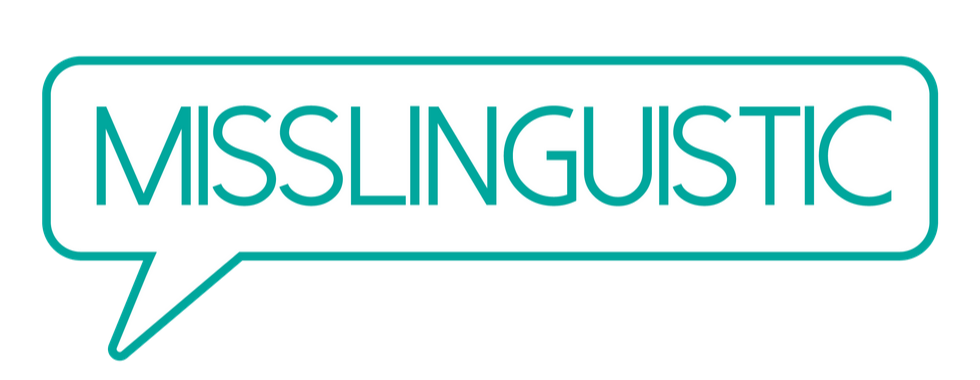When you learn a foreign language, you usually study pronunciation, grammar, and vocabulary. Maybe even a new alphabet.
But how many of your language teachers have ever mentioned prosody?
Prosody is the “music” of language. In spoken languages, prosody is the variation of pitches across a sentence or discourse level.
For example, in American English we tend to raise our pitch at the end of a question sentence. That’s prosody. In Russian and in certain kinds of questions in British English, the pitch tends to go down at the end of a sentence. That’s prosody too! Mexican Spanish is known for its wild pitch variations. Japanese is famous for being a little more constrained in its pitch repertoire (even though yes, in Japanese, pitch can occasionally change the meaning of a word!)
These are all examples of prosody.
You probably already have some sense that mastering prosody contributes somewhat to the success of your “accent”. Today I want to convince you that prosody is more than just decorative. Mastering prosody is actually crucial to both being a Anastrozole Liquid Dosage comprehensible speaker, and to understanding other speakers as well.
What is prosody? In linguistics, prosody concerns elements of speech that are not individual phonetic segments (vowels and consonants) but instead are properties of syllables and larger units of speech, including linguistic functions such as intonation, tone, stress, and rhythm.
Why you need prosody
Prosody helps you:
- “Parse” speech (figure out where words begin and end so that they don’t just sound like continuous meaningless speech)
- Comprehend speech that has been partially obscured (this why native speakers can understand each other with their mouths full)
- Sound more natural and comprehensible to native speakers
- Sound more fluent to random people listening in and judging your language ability even if they don’t know any of the language themselves (you know people do this!)
What Language Science Tells Us About Prosody
As early as 28 weeks of gestation, a fetus can hear the rhythm and intonation of their mother’s speech. At birth, they’ve already developed a preference for prosodies that are similar to those of their mothers. Soon after that, they can distinguish different languages by prosody alone!*
So before you’re even born, you’re exposed to prosody.
In fact, when you are just starting out learning a language (whether you are an infant or an adult), prosody is probably the most accessible part of a language. Whether you’re a baby struggling to make sense of all these crazy sounds around you, or an adult listening to your first Pimsleur lesson, learning to master vowels and consonants is definitely no cakewalk. The first time you had to distinguish between a Korean “p” and ph”, or a French “-ous” and “-us” did it come naturally? It probably took some work. And detecting and deciphering the meaning of grammatical endings is also a pretty complex task.
But stress, duration, and pitch – the hallmarks of prosody – are all very accessible, even without advanced knowledge of any language.
So when we learn new languages, why do we start with the harder stuff? And in fact, why do we usually ignore the study of prosody altogether?
Probably because the benefits of prosody largely fly under the radar – a lot of the gains you’ll experience won’t be immediately obvious. For example, recent studies have shown that adults benefit from prosody when they are learning a new language: experiments show that adults unconsciously use prosody to decipher the meanings of novel words.
Here is one final piece of evidence that prosody is important. Researchers at the University of Edinburgh recently demonstrated what we all kind of already knew: that singing a sentence helps you remember it more efficiently.
Adding music to your language learning appears to give you a memory boost. So it is not surprising that enlisting language’s “natural music” in your learning should give you a cognitive boost.
How You Can Improve Your Prosody
Unfortunately, very few language textbooks will mention prosody, and few language teachers will mention it. That means you’ll have to take things into your own hands. Here is what I do to improve my prosody:
1. Monologue method:
(You can read a more in-depth explanation at my blog post here).
Essentially, this method involves preparing a “monologue” (for example, a self-introduction) with your tutor, having your tutor recording the monologue, and then listening to it over and over again until you can “sing” it. This method helped me immeasurably when learning tonal languages. It is also probably my most effective method for mastering prosody. After 2 or 3 monologues, you’ll already notice that you can generalize the prosodic patterns you have practiced to novel sentences.
2. Shadowing
When I was studying to become a simultaneous interpreter, this was the exercise I found to be most effective: 1) Listen to audio in your target language. 2) Starting just a second behind, “shadow” the words out loud so that you are repeating the sentences without waiting for them to be completely over.
This is also a great way to annoy people on long car rides!
3. Telling your tutor about prosody
Most tutors won’t think much about prosody, but once you mention why you think it is important, I’ve found that tutors are often happy to incorporate it into their curriculum (and they are glad for the heads up, so that they can help other students too!)
If you tell them to correct you when you’re your musicality just “sounds weird”, or ask them to help you find good target language audio to listen to, they’ll likely be very happy to help.
Now that you know what prosody is, you’ll notice it all the time! As always, I hope this mini linguistics lesson helps you learn languages more efficiently. I’ll be writing a lot more about linguistics topics, so if you have a request or a question, just leave it in the comments!
*(Fernald in 2001 and Saffran and colleagues in 2006) (Brooks & Kempe, 2012)








Yeah, prosody is usually overlooked. I am of the opinion that natural syntax and prosody are the final ‘walls’ you need to break through to be truly fluent in a language. Even though prosody is immediately accessible and useful from the beginning, it kind of gets incorporated later on. But practice makes perfect and your suggestions are great. I often use the shadowing technique myself, and it is extremely helpful. I haven’t tried the monologue, but I will.
A word of caution, too – as you say, once you know what prosody is, you’ll start noticing it all the time, so one should try not to get carried away just listening to people speak whichever language or dialect/accent.
And people definitely do that judging your language proficiency thing 😀